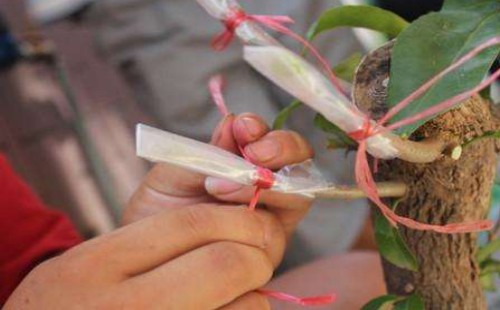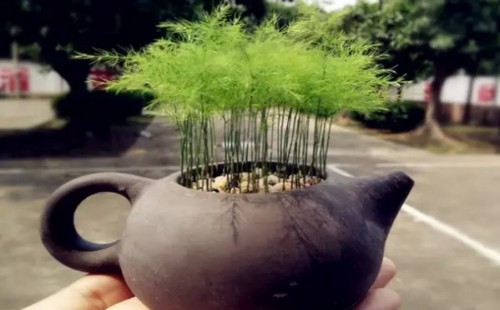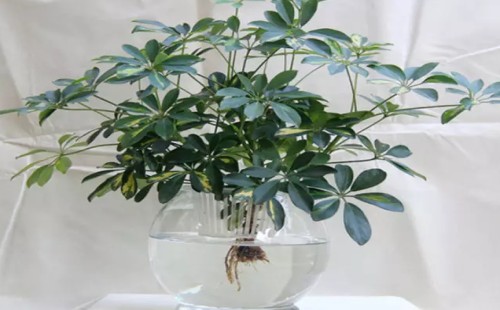Grafting methods and matters needing attention of Prunus mume
Grafting is a common means of cultivating potted seedlings, which is mostly used in the cultivation of seedlings. The same is true of Prunus triloba. As a potted plant, grafting is also used to breed seedlings. And the grafting of plum trifoliate often can be divided into bud grafting and branch grafting two ways, as long as the operation method is correct, it is easier to graft survival. However, bud grafting is more widely used than branch grafting. So, how do you graft trifoliate plum?

To graft plum, first we have to choose an appropriate time, if it is bud grafting, generally in late summer and early autumn, preferably in late August implementation; and if it is to adopt branch grafting, generally in spring, preferably in February-March implementation. The survival rate of grafted seedlings tends to be higher because of the selection of more suitable grafting time.
After determining the grafting time and grafting method, we should determine the scion of rootstock according to the grafting method selected. If it is budding, you can choose annual seedlings of trifoliate plum as rootstock, of course, you can also use peach, peach seedlings, or even wild rose plants, are OK.
As scion bud grafting, it is suggested that scion bud grafting should be cut from mature plant with good variety, good growth condition and no disease and insect infection. The selected and cut branches require strong growth and full leaves and buds. In this case, it is more conducive to survival after budding, and the varieties of grafted seedlings are also higher. For the later flowering and flowering, it often plays a positive role in improving the ornamental quality.
If grafting is chosen, the rootstock used may be the same as that of bud grafting. But there are some differences in scion cutting, first of all in time. When scions are cut, they are usually taken before the buds appear in early spring. It can also be cut in winter, but it has not yet reached the best time for branching, so it needs to be stored in sand in time, and then taken out for use when it is suitable for branching in spring.
The grafting process of Prunus triloba is similar to that of many other tree species. In many previous articles, Xiaobian has already made relevant explanations, and will not be detailed here. However, if you want to make the grafted seedlings survive smoothly, the maintenance and management work in the later stage should not be careless. So, how to maintain and manage the plum trees after successful grafting?
When the grafted seedlings survive, they should be planted in pots in time, and the planting time is usually carried out in spring and autumn. Original spring is generally carried out before germination, autumn words are generally carried out after falling leaves. If it is transplanted and grafted, the adult trees, especially the grafted seedlings, can be carried out in July and August of the first year, but it is necessary to keep the fibrous roots as much as possible, cut off the roots from two to three sides for harvesting and transplantation, which is more conducive to survival.
However, the survival and growth effect of grafted seedlings often plays a decisive role in whether the method used in the grafting process is appropriate, so in the grafting process, we need to pay attention to the following aspects.
1. If you want to cultivate grafted seedlings into small tree shapes, you usually adopt high-stem grafting techniques to carry out high-grafting on the trunk of the rootstock, so that the position of the entire crown can be improved to a certain extent.
2. If budding is carried out in the middle and late August of autumn, it is not allowed to germinate in the same year, and the rootstock is cut off from the upper position of budding in the spring of the next year, which can promote the rapid formation of branches.
3. Branching methods can be cut or cleaved, generally in the middle and late March of early spring, when winter buds begin to grow strong. After the branches are connected, the grafting parts should be covered with soil or matrix in time, and the grafting can survive in 3 weeks if it is smooth.
4. After the grafted seedlings survive smoothly, we need to cut off the tillers on the rootstock in time, and with the gradual increase of temperature, we should remove the inclusions in the grafted place in time, and then transplant them in pots.
Time: 2019-06-07 Click:
- Prev

How to sow asparagus seeds
Many people think that asparagus is only suitable for viewing leaves as a potted plant. In fact, asparagus can also bloom. It just... Asparagus flowers are relatively small, mostly white and green, looking very elegant and beautiful. And after the flowers fade, the berries will gradually form, and when the berries mature, they will turn black.
- Next

Hydroponic culture technique of duck foot wood
Duck palm wood can not only soil basin, but also can be hydroponic, and as long as the scientific use of planting and breeding technology, it can also make it grow well, quite ornamental. The hydroponic culture of duck palm wood can usually be converted to hydroponic culture through water insertion and soil culture, but the most commonly used is the use of branch hydroponics and hydroponics. Below
Related
- Fuxing push coffee new agricultural production and marketing class: lack of small-scale processing plants
- Jujube rice field leisure farm deep ploughing Yilan for five years to create a space for organic food and play
- Nongyu Farm-A trial of organic papaya for brave women with advanced technology
- Four points for attention in the prevention and control of diseases and insect pests of edible fungi
- How to add nutrient solution to Edible Fungi
- Is there any good way to control edible fungus mites?
- Open Inoculation Technology of Edible Fungi
- Is there any clever way to use fertilizer for edible fungus in winter?
- What agents are used to kill the pathogens of edible fungi in the mushroom shed?
- Rapid drying of Edible Fungi

